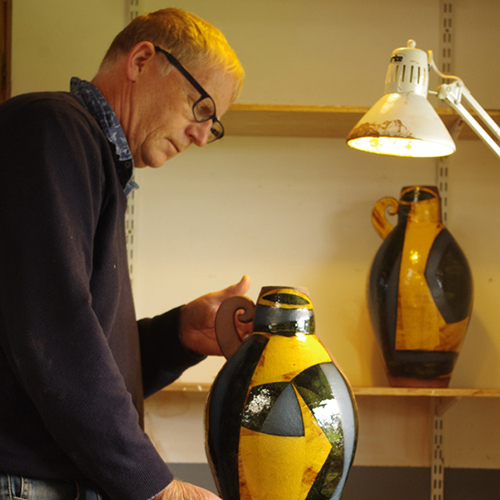Richard Phethean is an established professional potter whose work has been exhibited throughout the UK and can be found in collections internationally. A graduate of the Camberwell School of Arts and Crafts, he undertook further training in the studio's of tutors Colin Pearson and Janice Tchalenko. He is a Fellow of the Craft Potters Association, and is on the Crafts Council of Great Britain's Index of Selected Makers.


Following an interest in early English slipware, Richard began an ongoing exploration of the medium. Using traditional slip-trailing and sgrafitto techniques, he spent two years developing ranges of honey and clear glazed tableware. However, preoccupied with achieving greater depth and texture of surface, a more personal style began to evolve. He brushed as opposed to dipping base colours on the terra cotta, building up layers of thin slip washes. Using paper resist and sponge-printed motifs, the decoration became geometric and analytical, the forms concave and stylised.
Two years spent working as a volunteer on a crafts project in the Papua New Guinea highlands 1985-87 had an overwhelming impact, both emotionally and politically. This led to a radical reappraisal of his work as a craftsman, and marked a return to classical vessel forms. A looser decorative style was accompanied by a sombre palette, and a matt clear glaze.
In the mid nineties saw a move back to the essential spontaneity and warmth of domestic earthenware pottery. Slip brushwork became less formal, and Richard returned to the use of glossy glazes.
The main body of Richard's recent work is sculptural, using the potter's wheel to create vessel forms from sectional, altered and assembled thrown and additional slab elements. These are made in a coarse-grogged red earthenware clay. The brushed slips and fine sgrafitto detail are applied at the leather hard stage. After a bisque firing, areas of plain clay are inlaid with an engobe wash, then the pieces are selectively wax resisted, before glazing and firing to 1125 degrees c.